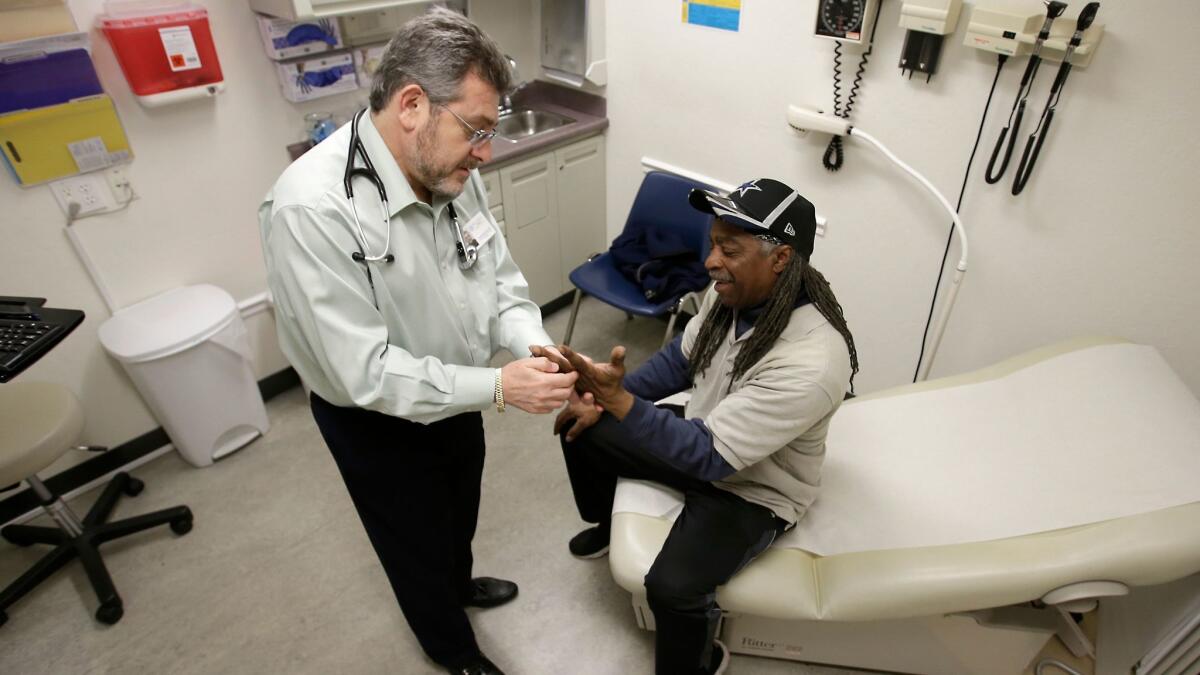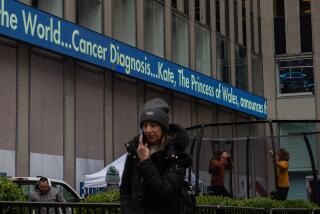Op-Ed: I learned more about breaking bad news from business school than medical school

I practiced the words in my head one more time before I picked up the phone and dialed. When my patient’s son answered, I froze for a moment, imagining the roles were reversed and I was about to receive the news that I had to give him. After collecting my thoughts, I introduced myself, reminding him that we had met the previous night.
Then I said: “I’m calling with bad news. Your father’s illness worsened this morning. He is going to die. I encourage you and your family to come to the hospital as soon as possible to say goodbye.”
My patient’s son will probably remember this phone call for years. I still remember everything about it six months later. It was only the third time I’d had to tell someone that their loved one was dying. Looking back on the conversation now, I’m glad that I prepared for it. But I am also concerned to realize that the practical steps I took — get the facts, write out the objective, address my own emotions, prepare for possible reactions, practice aloud — came not from my medical training but from a business-school course on hiring and firing employees.
Few conversations are of greater consequence than those in which a doctor must tell someone their loved one is dying.
Like most doctors, I spent four years in medical school learning to treat hundreds of illnesses and help patients manage their health. I spent very little of this time learning how to work with patients when modern medicine runs out of miracles — and only a few hours, spread over four years, learning to lead end-of-life conversations and deliver bad news.
This breakdown is typical of medical education across the country. A recent study of medical curricula, published last year in the American Journal of Hospice and Palliative Medicine, found that the average time dedicated to end-of-life care is 13 hours spread across multiple courses over four years. In a recent survey of graduating medical students, 42% reported that they were never taught how to talk to patients about dying, and 48% reported that they never received feedback on how they deliver bad news.
No doubt this is one reason why so many people have personal stories of the “I can’t believe my doctor said that to me” variety. Just the other day, I listened as one of my patients described the anger she felt when, days before her husband died of cancer, a doctor checked his phone while they were discussing her husband’s treatment.
By contrast, many business leaders direct much of their energy toward mastering the art of difficult conversations. As one of my business school professors liked to say, leadership is all about getting the details right in critical conversations.
Why do medical schools devote so little time to cultivating these communication skills in their students? Few conversations are of greater consequence than those in which a doctor must tell someone their loved one is dying. Our conversational shortcomings in these moments prevent patients from understanding difficult diagnoses, leading some to pursue futile end-of-life treatments that do not increase the quality or duration of their lives.
There isn’t one way to teach these skills, but a handful of medical schools are pointing the way forward. Weill Cornell Medical College requires all students to complete a two-week palliative care clerkship. During the course, students are relieved of clinical responsibility so that they can focus on improving end-of-life care. At Stanford University School of Medicine, 20 students a year take “Managing Difficult Conversations,” a class in which students role-play challenging scenarios. Courses like these should be required at all medical schools.
Recently, I found myself on the other side of an end-of-life conversation. My grandmother was in an intensive care unit, and my grandfather called me in a frantic state because he couldn’t figure out what was happening.
I called the hospital and got through to a nurse, who relayed every detail: The amount my grandmother’s blood pressure had dropped, the number of times she was given epinephrine, the rounds of CPR. After what felt like an eternity, I finally asked: “She died, didn’t she?” Her answer: “Yes.” The nurse had spent so much time on the details, she had forgotten to tell me the only thing I needed to know.
After I got off the phone, I practiced what I needed to say to my family. Then I called them and said it: “Grandma died.”
One of my most respected business professors — someone with more than 60 years of experience in his profession — told me he still practices difficult conversations before he has them. It helps him clarify his goals and the means by which he can achieve them. Medical schools need to teach doctors to do the same.
Tom Roberts is an internal medicine resident at Massachusetts General Hospital in Boston. He received his MD/MBA from Stanford University.
Follow the Opinion section on Twitter @latimesopinion or Facebook
More to Read
A cure for the common opinion
Get thought-provoking perspectives with our weekly newsletter.
You may occasionally receive promotional content from the Los Angeles Times.






